Idea by
Aistė Ambrazevičiūtė and Tautvydas Urbelis
Call for ideas 2020
Overgrowing
Overgrowing
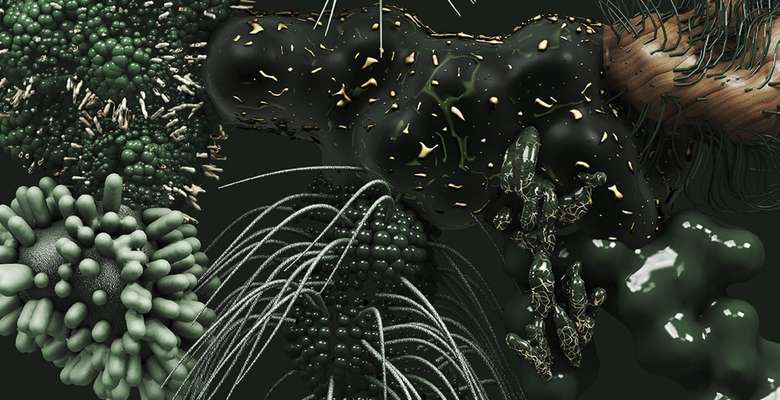
- New alliances
Overgrowing investigates our intimate relation with architecture, that is simultaneously ever-present and invisible, evolving and disappearing, material and imaginary. The project explores different textures of ever-changing city. It starts from material, but it exceeds it and permeates into digital, artificial and imaginary. Overgrowing is both a collaborative research project and methodology to explore how architectural objects become symbolic, how they change our perception of what architecture is and how they blur the lines between tangible and imaginary, build and grown.
Architecture itself takes up a peculiar position within our lived world. It is a curious attempt of humans to create their own environment. But it is often forgotten that environment(s) existed before humans and will (likely) to exist after. In this sense, architecture is always augmented or event parasitic. It reclaims the land and outgrows its original intentions, permeating myriad of different milieus.
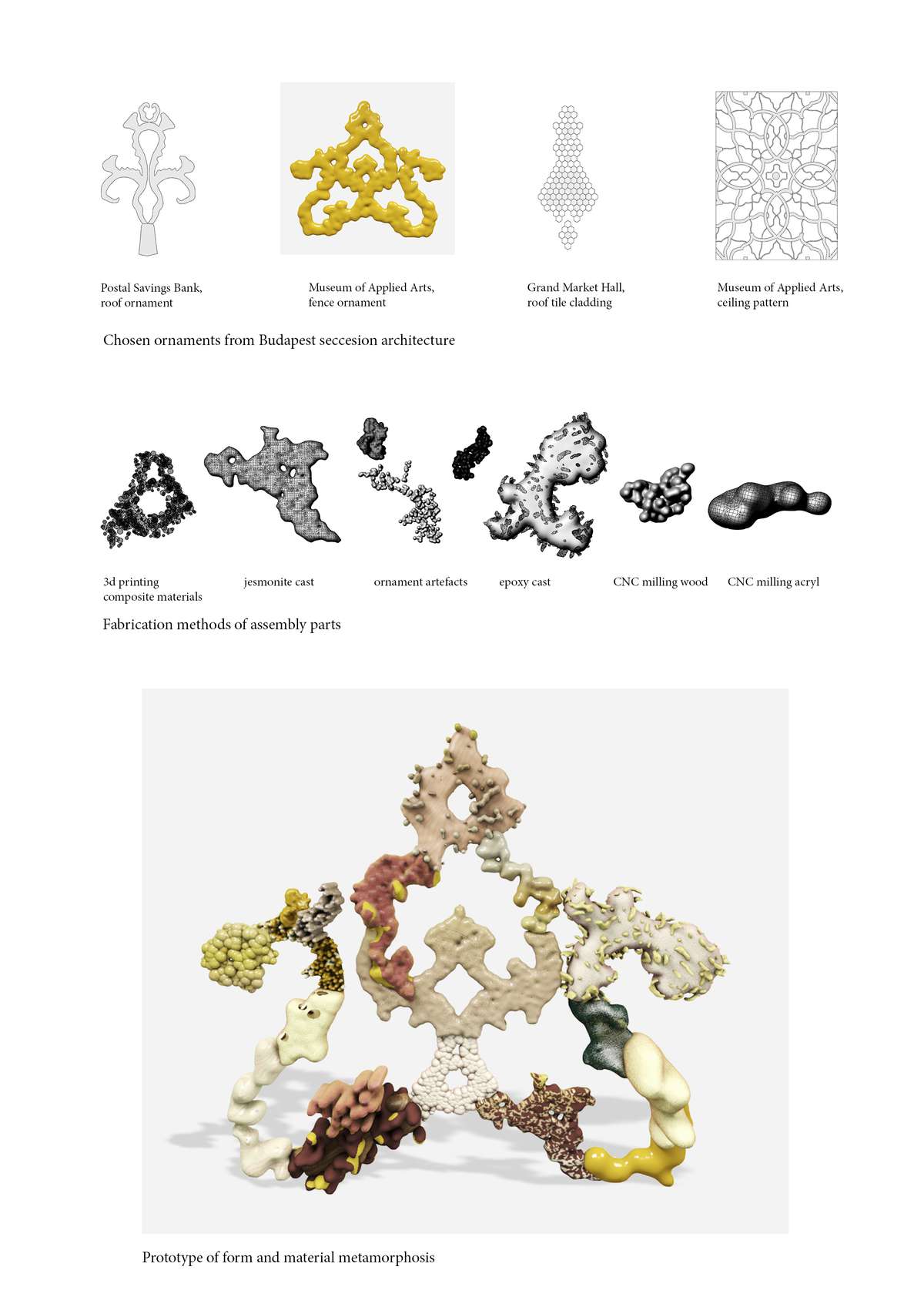
Budapest has a unique set of patterns expressed through architectural ornaments, that can be interpreted as the language of Art Nouveau. We want to read this language in our contemporary voices. Parts of ornaments, that bear aesthetic, historical and social meaning, give us a starting point. Every piece is symbolic inasmuch as it is material. These ornaments evoke materiality of the symbolic. We borrow this multifarious idea and develop it under the guise of ecosophical thinking.

Materiality plays key role in developing and growing patterns. For us, concrete and digital structures are differently but equally material. Digital projections are as material as bricks. We also work with different materialities - existing ones and imaginary – to create new objects. Foam, silicone and epoxy extends and transforms existing ornaments and parts existing architecture. This way we want to reveal multi-layered language of the city. 3D printed objects overgrow the spaces that they are

We perceive the city as constantly changing, but in this case we want to focus on slow decay rather than rapid growth. Decay, ruins and crumbling structures has a strong poetic undertone. It reminds us that just like poetry, that symbolically “overgrows” the literal meanings of words, architecture has a strong tendency to exceed its original limits. Ornaments are precisely this excess and more than anything they are prone to disappearance.
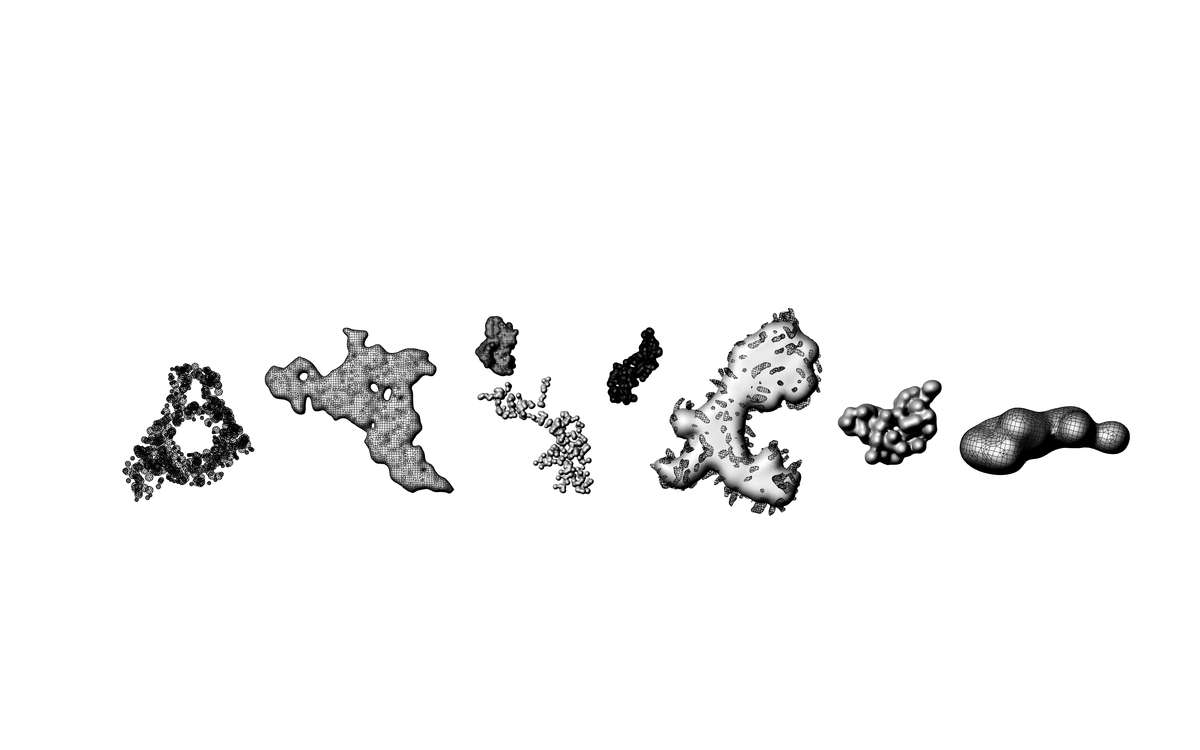
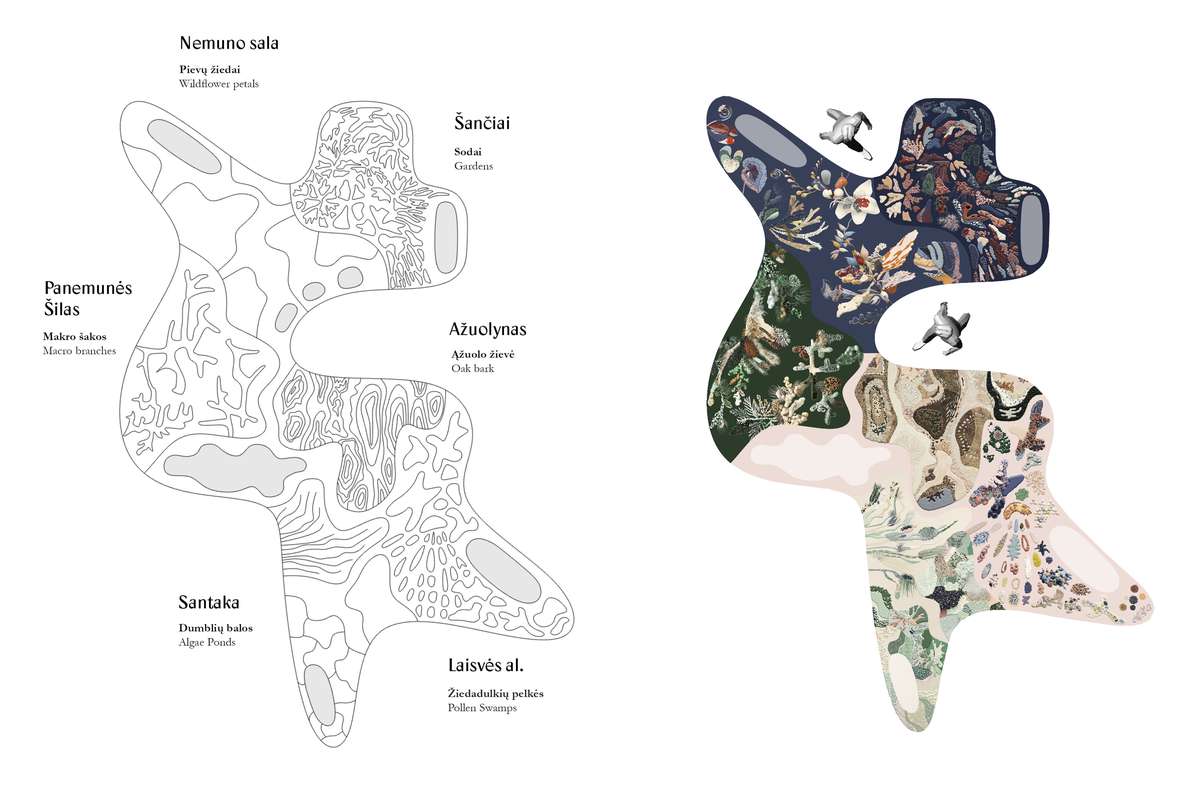
Algae ponds of the riverside, wildflower fields of Nemunas island, pollen swamp of Laisve’s alley are all silently shaping Kaunas tapestry, which hides the mastery of the design and influence. Advanced technology allows us to experiment and merge new ideas creating new sensory experience. Various natural surfaces imitate diverse material characteristics like wood, stone, glass or plastics with the contrasting features of raw and polished, natural and artificial. Multimateriality of nature holds
Overgrowing
Overgrowing

- New alliances
Overgrowing investigates our intimate relation with architecture, that is simultaneously ever-present and invisible, evolving and disappearing, material and imaginary. The project explores different textures of ever-changing city. It starts from material, but it exceeds it and permeates into digital, artificial and imaginary. Overgrowing is both a collaborative research project and methodology to explore how architectural objects become symbolic, how they change our perception of what architecture is and how they blur the lines between tangible and imaginary, build and grown.
Architecture itself takes up a peculiar position within our lived world. It is a curious attempt of humans to create their own environment. But it is often forgotten that environment(s) existed before humans and will (likely) to exist after. In this sense, architecture is always augmented or event parasitic. It reclaims the land and outgrows its original intentions, permeating myriad of different milieus.
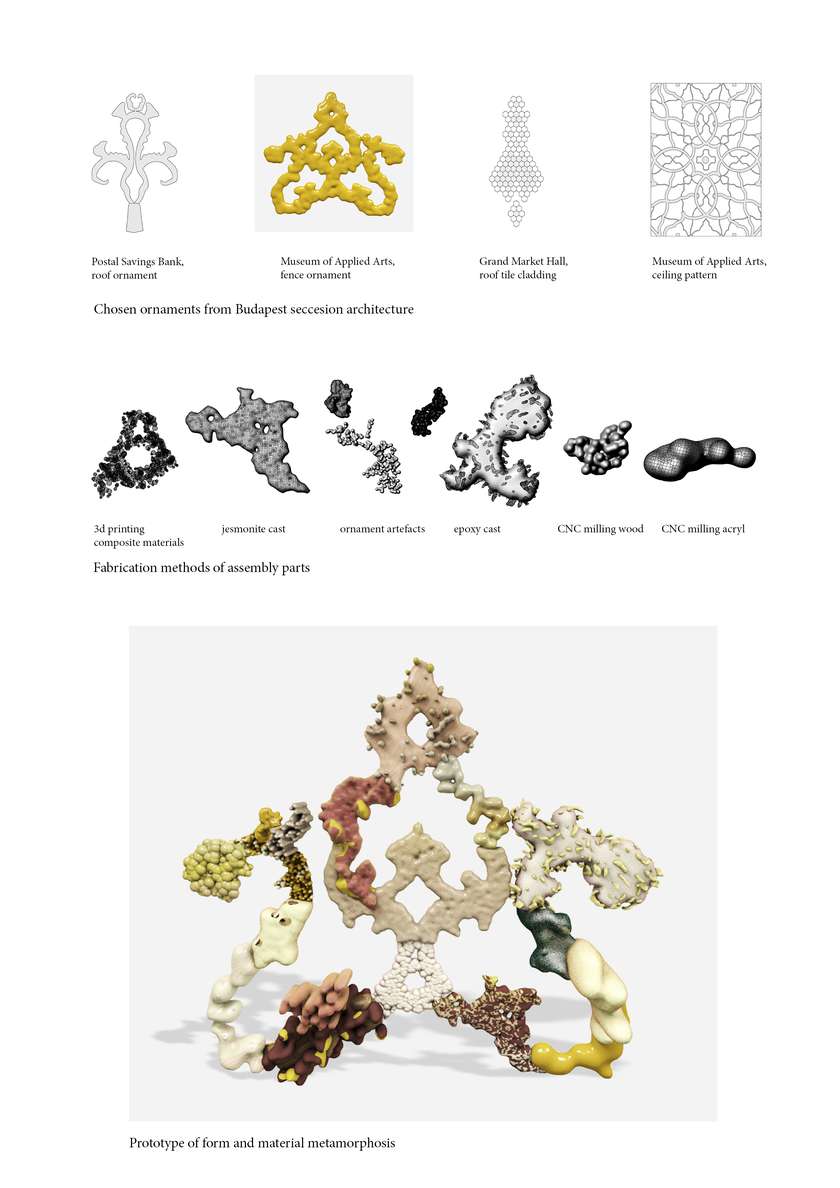
Budapest has a unique set of patterns expressed through architectural ornaments, that can be interpreted as the language of Art Nouveau. We want to read this language in our contemporary voices. Parts of ornaments, that bear aesthetic, historical and social meaning, give us a starting point. Every piece is symbolic inasmuch as it is material. These ornaments evoke materiality of the symbolic. We borrow this multifarious idea and develop it under the guise of ecosophical thinking.
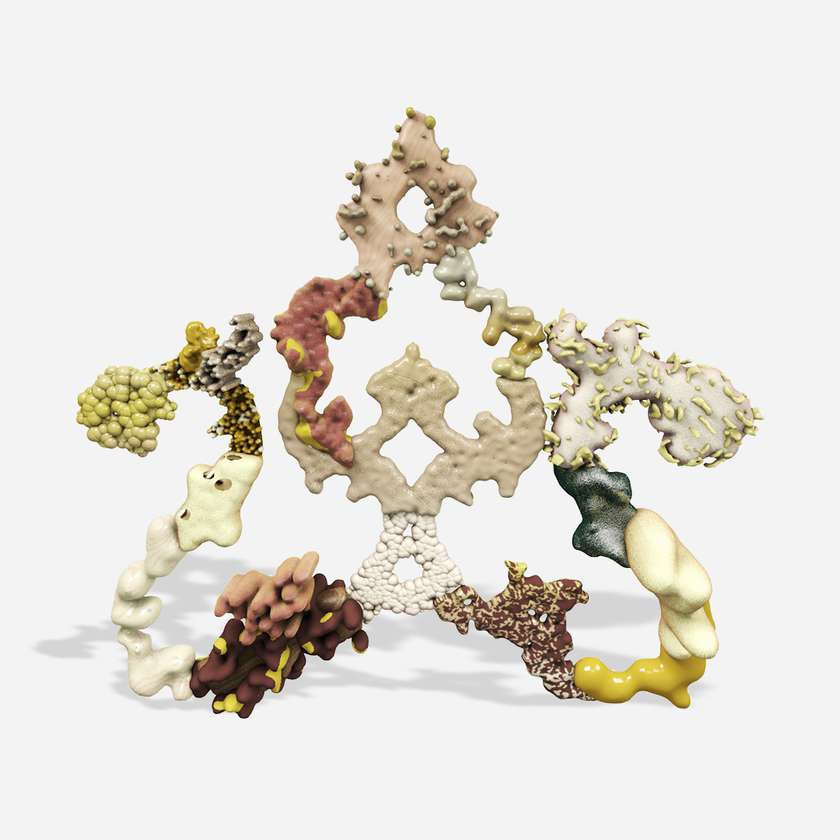
Materiality plays key role in developing and growing patterns. For us, concrete and digital structures are differently but equally material. Digital projections are as material as bricks. We also work with different materialities - existing ones and imaginary – to create new objects. Foam, silicone and epoxy extends and transforms existing ornaments and parts existing architecture. This way we want to reveal multi-layered language of the city. 3D printed objects overgrow the spaces that they are
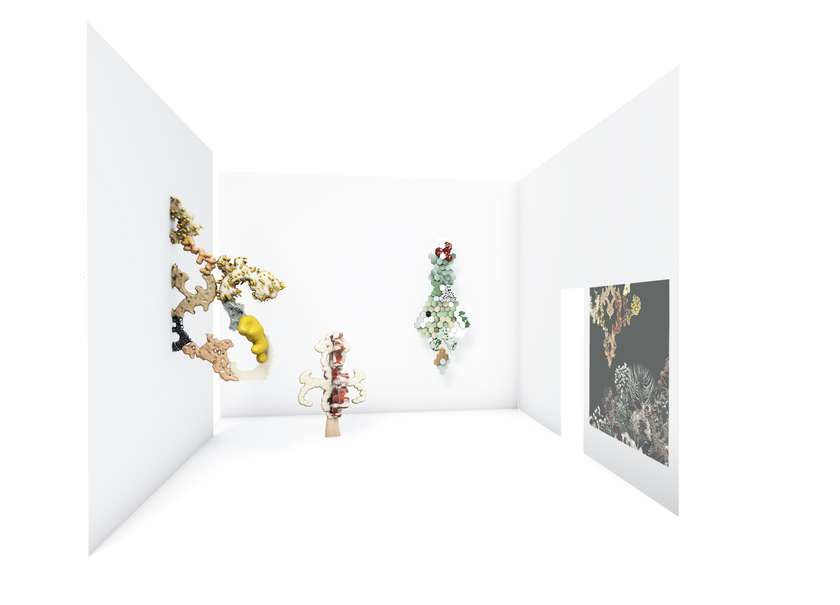
We perceive the city as constantly changing, but in this case we want to focus on slow decay rather than rapid growth. Decay, ruins and crumbling structures has a strong poetic undertone. It reminds us that just like poetry, that symbolically “overgrows” the literal meanings of words, architecture has a strong tendency to exceed its original limits. Ornaments are precisely this excess and more than anything they are prone to disappearance.
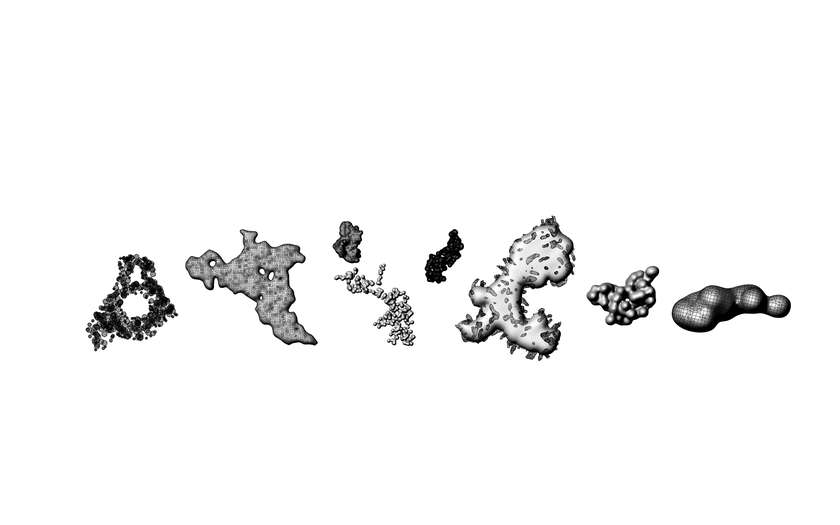
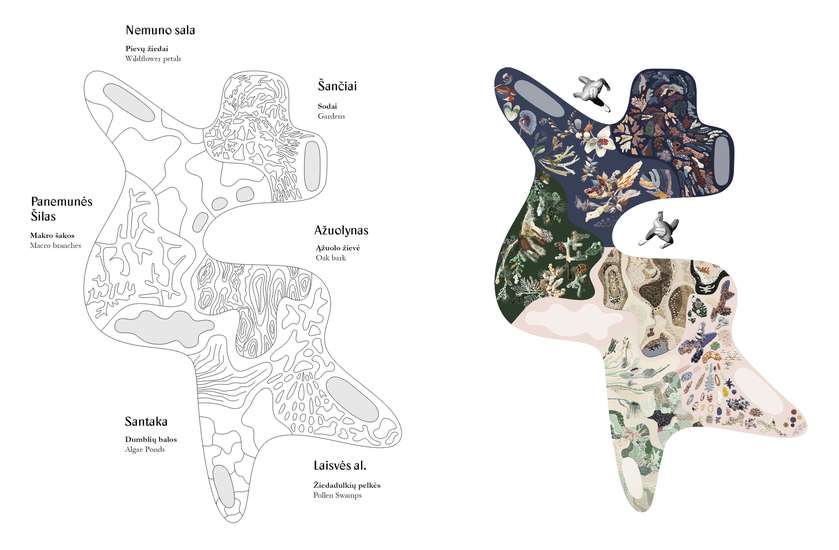
Algae ponds of the riverside, wildflower fields of Nemunas island, pollen swamp of Laisve’s alley are all silently shaping Kaunas tapestry, which hides the mastery of the design and influence. Advanced technology allows us to experiment and merge new ideas creating new sensory experience. Various natural surfaces imitate diverse material characteristics like wood, stone, glass or plastics with the contrasting features of raw and polished, natural and artificial. Multimateriality of nature holds